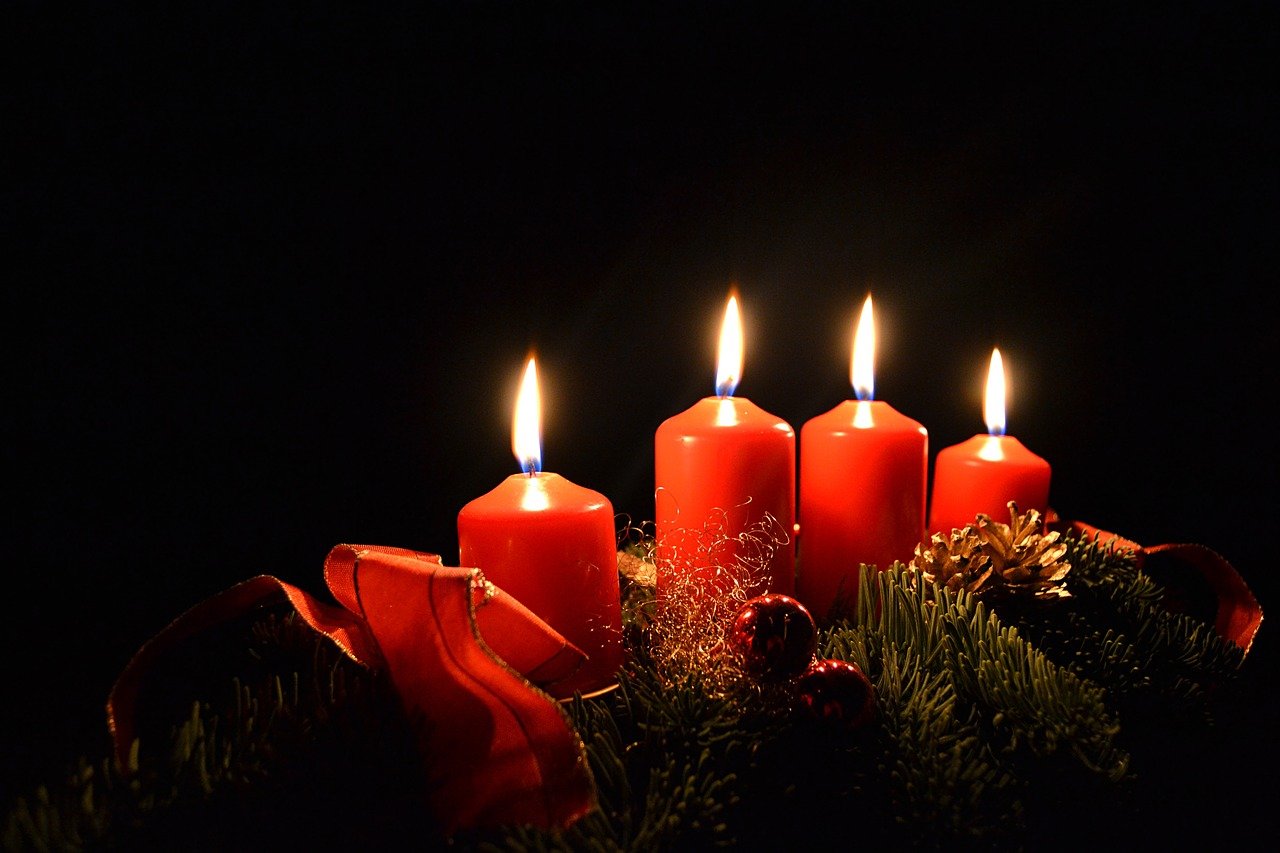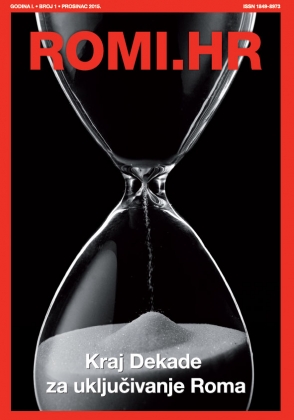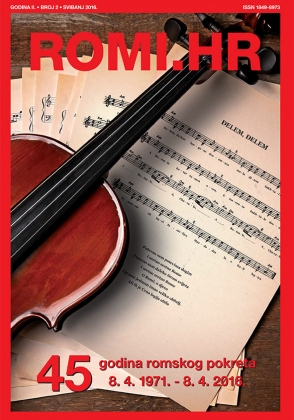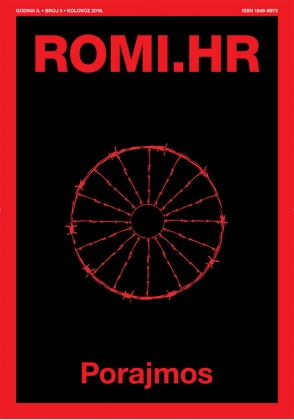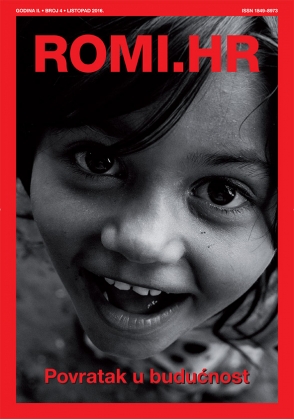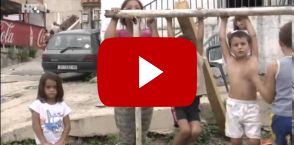Vijesti ROMI.HR
/Svim svojim čitateljicama i čitateljima Redakcija Portala ROMI.HR želi sretan i blagoslovljen Božić.
Prevela: Antonia Mudrovčić
Hrvatski božićni i novogodišnji običaji duboko su utkani u hrvatsku tradiciju. Kulturno bogatstvo Hrvatske je veliko, a samim time i broj običaja u različitim krajevima Hrvatske.
Ono što bismo možda najprije povezali s pojmom božićne i novogodišnje tradicije svakako bi bila hrana. Obilni blagdanski stolovi dio su božićnog i novogodišnjeg slavlja u svim regijama. Na Božić se na stolu nalaze svakojake slatke i slane delicije. Međutim, blagdanski stol razlikuje se ovisno o regiji o kojoj govorimo. Sljedeći primjeri odnose se većinom na kontinentalnu regiju. Najtradicionalnije božićno jelo koje se nalazi na blagdanskom stolu kontinentalne regije je purica s mlincima. To je ujedno i najvažnija razlika između božićnog i novogodišnjeg blagdanskog stola. Naime, vjeruje se da se sva perad mora pojesti prije Nove godine jer perad nogama baca zemlju iza sebe. Time se simbolizira da sve ono što se loše dogodilo u godini na izmaku u njoj i ostaje. Za razliku od božićnog blagdanskog stola, na novogodišnjem se obično nalazi svinjetina. I ovo je vjerovanje u sebi ima simboliku. Svinja dok traži hranu ukopa noge u tlo i njuškom gura prema naprijed. To simbolizira napredak i blagostanje u novoj godini. Vrlo je popularna i francuska salata, razne slatke delicije s makom i orasima, suhi kolači, a neizostavna je i sarma koja se najčešće ne jede samo na dan Božića ili Nove godine nego i danima nakon.
Kada govorimo o božićnim i novogodišnjim običajima u Hrvatskoj, možda bismo trebali početi već od kraja studenog ili početka prosinca. Četiri tjedna prije Božića počinju pripreme za taj blagdan. To je razdoblje adventa ili došašća. Tradicionalno se izrađuje adventski vijenac koji na sebi ima četiri svijeće koje se pale četiri nedjelje prije Božića. U Hrvatskoj i adventski sajmovi postaju dio neizostavne tradicije.
Šestog prosinca obilježava se dan Svetog Nikole. Sveti Nikola kršćanski je svetac, a danas je poznat kao lik koji djeci donosi darove. Djeca tradicionalno noć prije nego što Sveti Nikola dođe čiste čizmice u koje im onda Sveti Nikola ostavi poklon ako su bili dobri, ili šibu ako nisu bili dobri.
Trinaestog prosinca, na blagdan Svete Lucije, sije se pšenica. Pšenica se sije kao simbol obnove života i plodnosti, a datum je izabran tako što od 13. do 25. prosinca ima 12 dana, koji simboliziraju mjesece sljedeće godine.. Sije se u plitke posude, a u sredinu posude stavi se svijeća. Pšenica se na Božić postavlja na blagdanski stol, ispod bora, pored jaslica ili na neko drugo prikladno mjesto. Još se jedan običaj veže se uz blagdan Svete Lucije. Period od 12 dana koristi se za predviđanja o mogućoj udaji ili ženidbi u sljedećoj godini. Djevojke i mladići na 11 papirića ispisuju imena potencijalnih supružnika, a dvanaesti papirić ostavljaju prazan. Svakog dana otvaraju jedan papirić i spaljuju ga. Posljednji papirić označava budućeg supružnika ili supružnicu, a ako je papirić prazan to znači da sljedeće godine nema ženidbe.
Badnjak je dan prije Božića, a uz njega vežemo mnoge običaje. Riječ Badnjak dolazi od glagola bdjeti zbog toga što se bdijenjem iščekuje Isusovo rođenje. Na Badnjak se posti, a uglavnom je jede riba, vrlo često bakalar. U prošlosti, a i danas u nekim krajevima Hrvatske, postoji običaj unošenja tri panja u kuću, kao simbola triju mudraca – Gašpara, Melkiora i Baltazara . Slama, kao znak Božića, duže je prisutna u tradiciji, a ovaj se običaj počinje pojavljivati i u urbanim sredinama. Trenutak unošenja slame u kuću označava službeni početak proslave Božića. Slama se najčešće rasprostire ispod božićnog drvca ili ispod stola, a manji se dio stavlja na stol i prekrije stolnjakom. Nakon unošenja slame uobičajeno je jesti večeru. Slama koja se rasprostire po podu simbol je Isusovog rođenja u štalici. Badnjak je također dan kad se ukrašava božićno drvce. Ispod bora se stavljaju jaslice koje podsjećaju na bit Božića, proslavu Isusova rođenja u betlehemskoj štalici. U primorskim krajevima zadržan je običaj ukrašavanja kuće grančicama kadulje, bršljana ili borovim granama, a to označava životnu snagu koja se suprotstavlja zimskoj uspavanosti prirode. Badnjak završava odlaskom na polnoćnu misu i tim misnim slavljem započinje Božić.
Božić se najčešće proslavlja u krugu obitelji i kod kuće, a na dan poslije Božića, blagdan Svetog Stjepana, odlazi se u posjet rodbini, prijateljima i susjedima. Ovo je dan kad mnogi ljudi slave svoj imendan (Stjepan, Štef…) pa je to često povod brojnim kućnim posjetama i slavljima. Čest poklon koji su mladići darivali djevojkama kao tzv. „božićnicu“ bila je ukrašena jabuka.
Hrvatske božićne pjesme su mnogobrojne, a prvu objavljenu zbirku božićnih pjesama, „Cythara octohorda“, objavili su hrvatski pavlini 1731. godine. U toj pjesmarici nalazi se pjesma „Narodi nam se kralj nebeski“. Još je starija pjesma „U se vrime godišća“ (U to vrijeme godišta).
Na Jadranu se zadržao običaj koledanja. Grupe vjernika idu od kuće do kuće i čestitaju ukućanima Božić i Novu godinu uz prigodne božićne pjesme. Domaćini u kućama u koje bi došli častili su ih suhim smokvama, narančama, sokovima i vinom. Ovaj običaj očuvan je u Dubrovniku, a kolenda se pjeva u noći Badnjaka i Stare godine.
Novogodišnji običaji nisu tako brojni kao božićni, ali postoje ophodi čestitara i darivanje u Sjeverozapadnoj Hrvatskoj. Jedan običaj i danas je popularan, a to je da se u novogodišnjoj noći nosi crveno donje rublje jer se vjeruje da ono donosi sreću. Javne proslave Nove godine obuhvaćaju slavlja na gradskim trgovima gdje se najčešće organiziraju koncerti. Neki ljudi se odlučuju za ostanak kod kuće i doček Nove godine u krugu prijatelja, a nekima je pak odlazak u noćne klubove idealan novogodišnji doček.
Katolički božićni običaji završavaju 6. siječnja blagdanom Sveta tri kralja. U crkvama se blagoslivlja voda.
Hrvatski božićni i novogodišnji običaji su brojni i predstavljaju vrlo velik udio u hrvatskoj kulturnoj tradiciji. Neki od njih nisu više toliko prisutni kao nekad, ali u današnje vrijeme mnogi se zaboravljeni običaji oživljavaju.
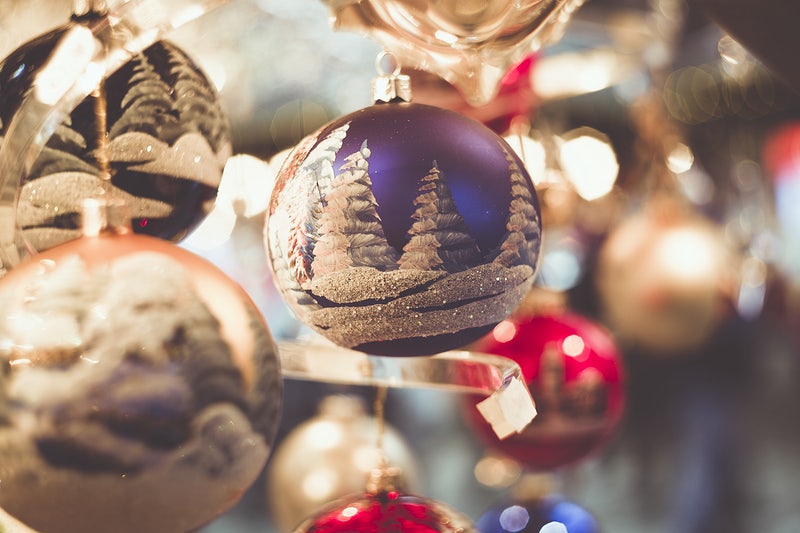
Croatian Christmas and New Year traditions are deeply rooted in Croatian tradition. Croatian cultural heritage is big and so is the number of traditions in different parts of Croatia.
The first thing we might link with Christmas and New Year traditions is food. Abundant festive tables are a part of the Christmas and New Year celebrations in all regions. On Christmas, there are a lot of sweet and salty delicacies on the table. However, festive tables are different depending on the region we are talking about. The following examples are mostly related to the continental region. The most traditional dish that is on the festive tables in the continental region is turkey with mlinci (type of dried and very thin flatbread). This is withal the most important difference between Christmas and New Year’s festive table. As it is believed, all poultry should be eaten before New Year because of the way they walk. When they walk they throw the earth behind them. It symbolizes that everything bad that happened in the previous year stays in it. Unlike the Christmas festive table, on the New Year festive table, we can find pork. This belief also has symbolism in it. A pig is pushing its legs into the ground while looking for food and is pushing forward. It symbolizes progress and wellbeing in the new year. Very popular dishes are Russian salad, different types of sweet delicacies with walnuts and poppy, biscuits, and we can’t leave out sarma (stuffed cabbage rolls), which is not eaten only for Christmas or New Year but also days after.
When we talk about Christmas and New Year traditions in Croatia maybe we should start from the end of November or the beginning of December. Four weeks before Christmas the preparations for that holiday are starting. This period is called advent or došašće. The tradition is to make an advent wreath with four candles that are being lit four Sundays before Christmas. Advent fairs are becoming a big tradition in Croatia.
6th of December is Saint Nicholas Day. Saint Nicholas is a Christian saint, and he is known today for bringing gifts to children. Traditionally, children are cleaning their boots the night before he comes and then Saint Nicholas leaves them a gift if they were good, or a twig if they were not good.
On the 13th of December, on Saint Lucy’s Day, wheat is sown. Wheat is sown as a symbol of life renewal and fertility. The date is chosen because there at 12 days between the 13th and 25th of December and they are symbolizing the months of next year. It is sown in shallow pots and there is a candle in the middle. On Christmas, the wheat is being put on a festive table, under the Christmas tree, next to the Nativity Scene or any other appropriate place. There is one more custom related to Saint Lucy’s Day. This period of 12 days is used to predict possible marriage in the next year. Young boys and girls are writing down the names of their potential spouses on 11 papers and the 12th one they leave empty. Every day they open one piece of paper and burn it. The name written on the last paper is the name of their future spouse and if the paper is blank that means there is no marriage next year.
Christmas Eve is the day before Christmas, and we link many customs with it. The word Badnjak (Christmas Eve) comes from the Croatian verb bdjeti (to watch) because this is how the birth of Jesus is being waited for. On Christmas Eve people fast and the most common meal is fish, especially cod. In the past, but also today in some Croatian regions, there is a tradition to bring three stumps into the house, as a symbol of the Three Wise Men - Gaspar, Melchior, and Balthasar. Straw – as a symbol of Christmas, is present in the tradition for a long time and this custom begins to appear in urban areas also. The moment of bringing the straw into the house signifies the official beginning of celebrating Christmas. Straw is most commonly spread under the Christmas tree or under the table, and a smaller amount is being put under the tablecloth and on the table. After bringing in the straw, it is common to eat dinner. The straw that is being spread on the floor is a symbol of Christ's birth in the stable. Christmas Eve is also the day when the Christmas tree is being decorated. The Nativity scene under the Christmas tree is a reminder of what Christmas is all about – celebrating the birth of Jesus Christ in the Grotto of Bethlehem. In coastal regions, the custom of decorating the house with sage, ivy, or pine branches is still present and it represents vitality that is fighting against the winter rest of nature. Christmas Eve finishes with the midnight mass and that Eucharistic celebration is the beginning of Christmas.
Christmas is usually celebrated around family and at home, and the day after Christmas (Saint Stephen's Day) is the day when people visit their relatives, friends, and neighbors. This is the day when many people celebrate their name day (Stjepan, Štef…) so this is also the occasion for numerous visits and celebrations. A very often gift that boys gave to girls as a so-called “božićnica” (Christmas bonus) was a decorated apple.
Croatian Christmas carols are numerous. The first published collection of Croatian Christmas carols “Cythara octohorda” was published by Pauline Fathers in 1731. In that songbook, there is a song “Narodi nam se kralj nebeski”. “U se vrime godišća (U to vrijeme godišta)” is an even older song. The tradition of caroling is still present in Adriatic. Groups of worshippers are going from house to house and wishing people a merry Christmas and a happy New Year. Hosts in houses that the worshippers’ visit are offering them dried figs, oranges, juices, and vine. This custom is still present in Dubrovnik, and carol songs are sung on Christmas or New Years’ Eve night.
New Years’ customs are not as numerous as the Christmas ones but there are also people walking around and congratulating and giving gifts in north-western Croatia. One custom is popular nowadays and that is to wear red underwear on New Years’ night. It is believed that it brings luck. Public celebrations of New Year include celebrations in city squares on which there are concerts. Some people decide to stay at home and wait for the New Year with their friends, and for some people going to a club is a perfect way of celebrating the New Year.
Catholic Christmas and New Year customs are ending on the 6th of January (Three Kings' Day). Priests are blessing the water on that day in churches.
Croatian Christmas and New Years’ customs are numerous, and they represent a very big part of Croatian tradition. Some of the customs are not as present as they used to be, but nowadays many of the forgotten customs are being revitalized.
Galerija slika:


